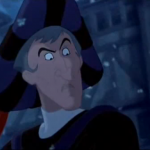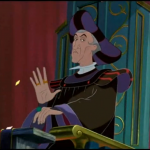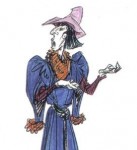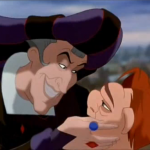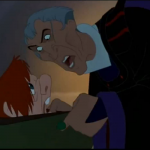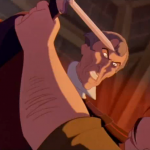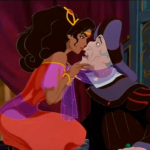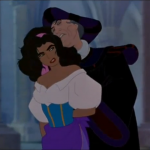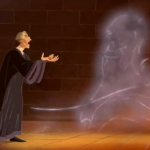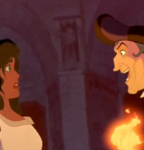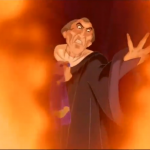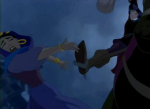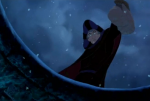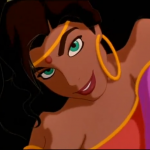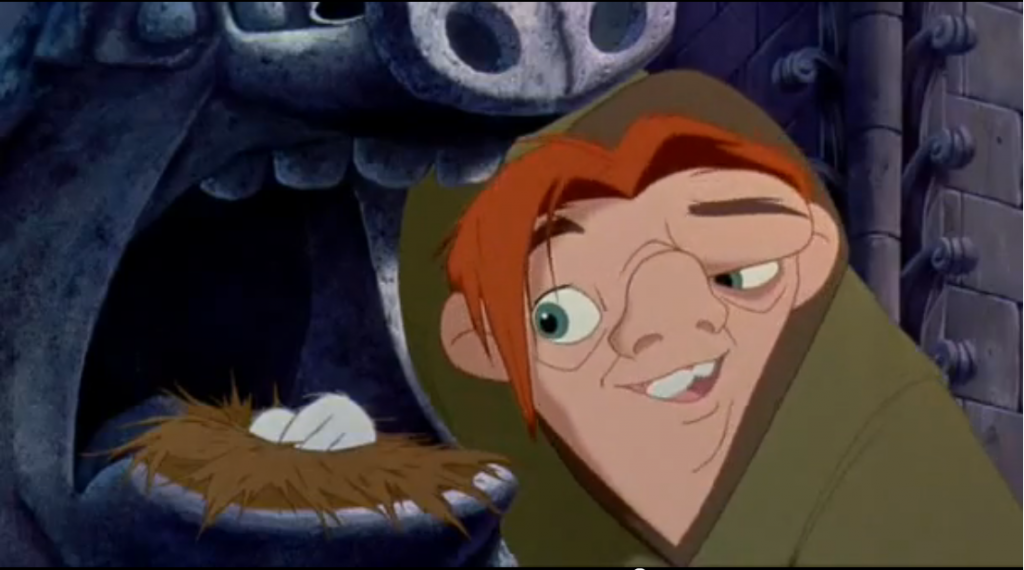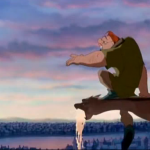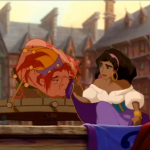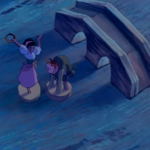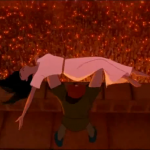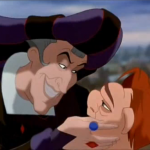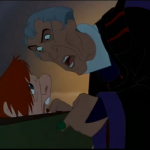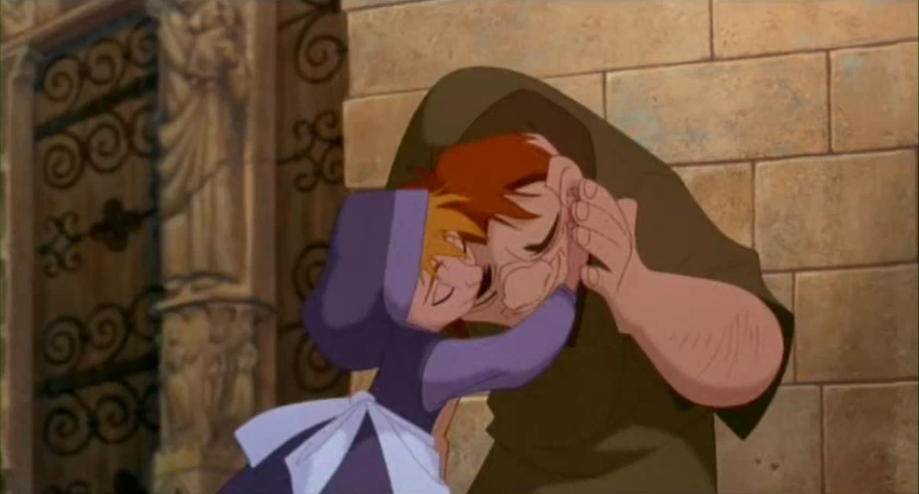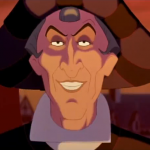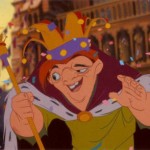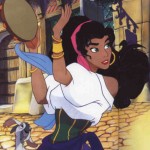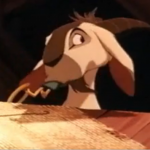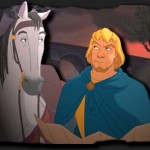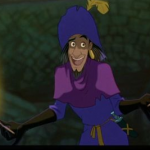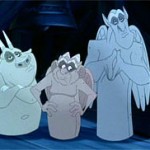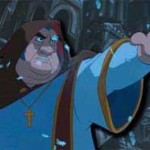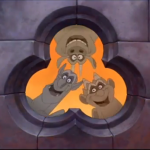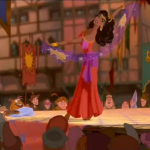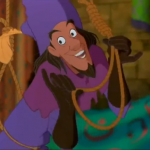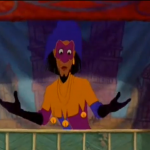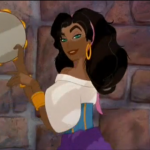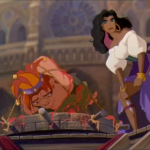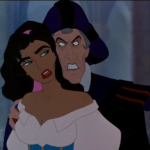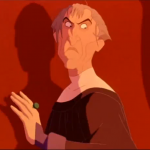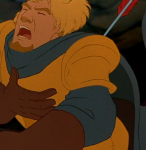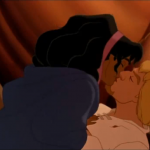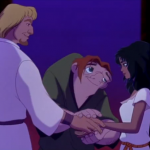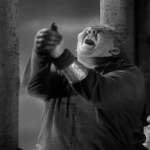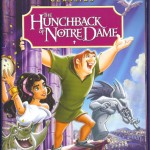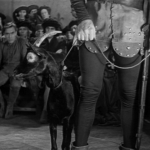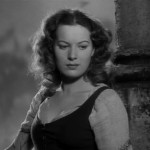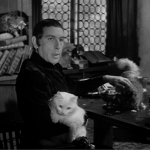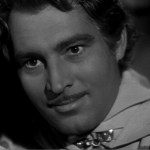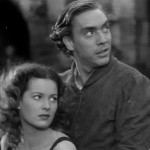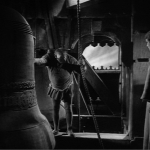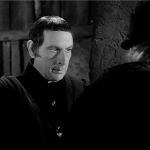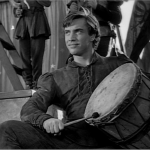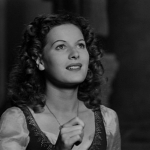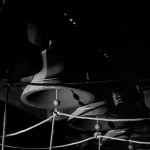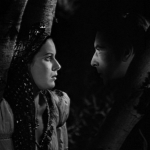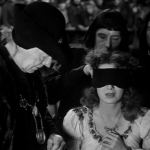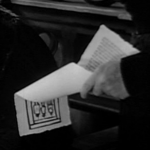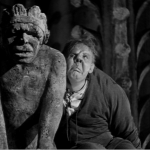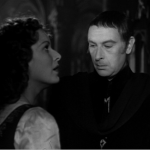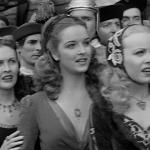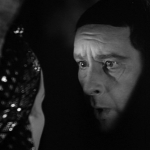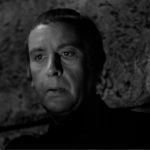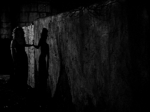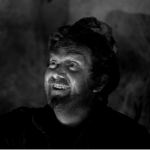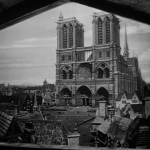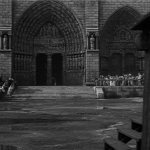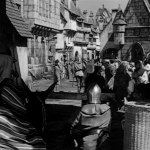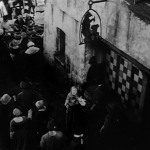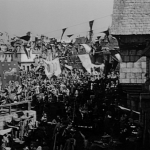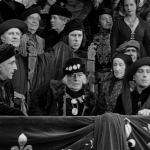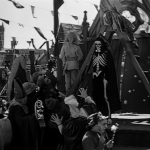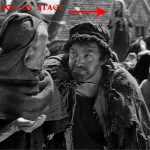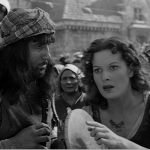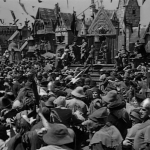Next up the Villain: Frollo
Frollo is Quasimodo’s counterpoint and the Villain of the movie. Frollo is a bit different from other Disney villains. Many of the villains are trying to get more power (Ursula, Jafar, Scar etc), Frollo already has Power, he is the High Justice of Paris. His motivation keeping control and he is fueled by hate. He thinks he’s better than everyone else from a moral stand point and if he judges it as amoral than he thinks he is in the right, from killing an innocent women, to trying to kill a baby, burning Paris or attempted genocide.
Disney villains generally have two looks to them, elegant and slim or fat yet still elegant. Frollo is of the elegant, slim and tall variety. Looking at the concept art you can see parallels between Disney’s Frollo and Sir Cedric Hardwicke. He dresses like noble but
we’re given no back story other than his relationship with Quasimodo so we have no where he comes from. In the musical Der Glökner von Notre Dame ( German musical by Alan Menkan based on the Disney movie) Frollo was a priest prior to becoming the high Justice, which makes his pious-bent makes a little more sense, but you don’t go from a priest to High Justice. At least in 1939 version his piousness was the result of having a Brother who was the Archdeacon. With Disney Frollo there is no hint or reason given for a morally-corrupt pious Judge. You can make guesses as to what the reason is for Frollo’s behavior but Disney films have never been a venue for giving out much character development of their villains. Character Development might prompt sympathy. My Guess would be being pious and acting moral helps Frollo maintain his hold over the Parisians.
Frollo is very conniving and manipulative. He raises Quasimodo out of guilt for killing Quasimodo’s mother in front of Notre Dame but he keeps him locked away in Notre Dame. I can’t quite figure out his logic for keeping Quasimodo in Notre Dame (other than the almighty plot and source material told him to), I mean Frollo lives in a jail. Anyway Frollo also raises Quasimodo with the hope that Quasimodo will be useful to him in some capacity. It’s hard to know if Frollo actually likes Quasimodo or he simply likes the dynamics of their Master/slave:Father/son relationship. My guess is Frollo all about Power and keeping power and Quasimodo serves as a consistent reminder of his hold over Paris and when Quasimodo proved too willful for him he tried to kill him.
In direct opposition to Frollo’s control is Esmeralda. Esmeralda is everything that Frollo hates, she’s a free-spirited Gypsy who dances and lives outside the social order that he controls. Frollo first notices her when she danced a very sensual dance and kissed him on the nose. The dance, while getting his attention wasn’t the factor to make him obsessives towards her, it was her defying him in support of Quasimodo who was being tortured by the crowd. Esmeralda uses some parlor tricks that Frollo misconstrues as witchcraft (another of Frollo’s turn off) and after a merry chase she gives him the slip
and goes into Notre Dame. Frollo’s obsession for her intensify to the point where he has to over come her, at this point by arresting her. Frollo tries to arrest her in Notre Dame but due sanctuary, she is protected. It’s at this point Frollo loses control and gropes her, and sniffs her hair, and thus the lust begins. As he can’t arrest her, he blocks her in Notre Dame stationing guards at every door of the cathedral. Frollo then sings about how his losing control is the fault of Esmeralda and not his (Hellfire). At this point arresting Esmeralda is not enough, he needs to be in possession of her or she mustn’t exists. It’s
during this song where he learns that once again that Esmeralda has given him the slip. Frollo then goes on a spree of burning Paris, trying to bribe other Gypsies for Esmeralda’s whereabouts and then arresting them for not being helpful. Frollo manipulates Quasimodo to learn the
location of the Court of Miracles. This is where Esmeralda is when Frollo attacks and arrests everyone there. As Esmeralda is tied to the stake and about to be burn, Frollo gives Esmeralda his final ultimatum, (him or Flame). Ultimately, like all Disney movies there is a climax that ends with the villain’s death, like many Disney movies, Frollo is not killed or subdue by the hero, he’s actually about to kill Esmeralda and Quasimodo but the gargoyle he is standing on breaks and Frollo falls to his death. So the real hero of the story is Notre Dame.
So in the history Disney of Villains, Frollo is one of the favorite. Nostalgia Critic and Nostalgia Chick from the immensely popular website Thatguywiththeglasses.com, ranked Frollo as one of the best villains after The Chernabog from Fanastia and Mola Ram from Indiana Jones and the Temple of Doom, respectively. As far as Disney Villains go, he’s guilty of some of the most heinous acts. Within the first two minutes of his introduction, he kills
a women and tries to kill a baby, he shows no remorse for
these acts, in fact he justifies them; the women ran, he just followed (he must have thought the kick was an act of God) and he justifies almost killing a baby because it’s ugly (ok he thinks it’s a monster, hey Frollo you’re no great beauty either). What makes Frollo more compelling as a Villain is his control and power and the fact that he thinks he both righteous and pure.

